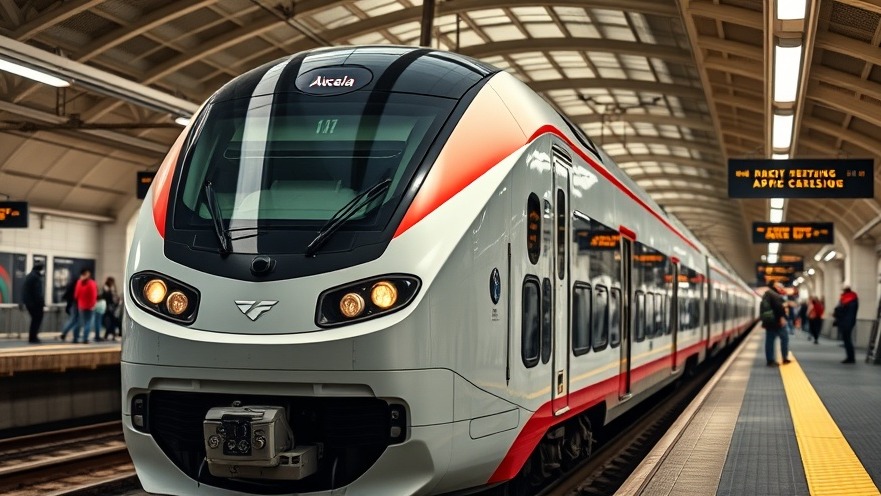
Revolutionizing Northeast Travel: The New Acela Train
The newly launched NextGen Acela train by Amtrak is nothing short of a revolution for travelers in the Northeast. This modern marvel hits speeds of up to 160 miles per hour, reducing travel times between key cities like Boston, New York, and Washington, D.C. In an age where time is of the essence, this train offers a compelling alternative to congested airports and stressful air travel.
A Vision Realized: From Concept to Reality
It's been over nine years since Amtrak first teased this project, igniting anticipation among passengers and rail enthusiasts alike. Leo Friedman, a recent traveler, captured this excitement perfectly. His journey from New Jersey to D.C. aboard the inaugural train is emblematic of a broader sentiment—a belief in the transformative power of advanced rail systems in the U.S.
Enhancements Tailored for Travelers
Amtrak's new Acelas come equipped with modernized features to cater to passengers’ needs, including upgraded seating, larger windows, and enhanced Wi-Fi capabilities. With a capacity to accommodate 80 more passengers than previous models, this train is designed with comfort and technology at its forefront. A self-serve food bar in the café adds an extra layer of convenience for those on the go.
Technological Innovations That Matter
The investment in this project is not merely about speed. According to Elliot Hamlisch, Amtrak's Chief Commercial Officer, the new Acela is the most technologically advanced train in America, drawing insights from successful rail systems in Europe. Importantly, these trains also meet enhanced safety standards, aimed to prevent incidents similar to the tragic derailment in Northeast Philadelphia in 2015. Such upgrades reflect a commitment not only to speed but also to passenger safety.
Location Insights: Integrating with Infrastructure Improvements
The arrival of the NextGen Acelas coincides with significant upgrades in existing infrastructure. The U.S. Department of Transportation has earmarked $43 million for enhancements at New York's Penn Station. This synergy between new train technology and station improvements signifies a holistic approach to rail travel in America.
Future Predictions: The Long-Term Impact of High-Speed Rail
With the landscape of American rail travel evolving, it raises questions about the potential for high-speed trains to reshape regional connectivity. Could this spark a renaissance in train travel across the country? The answer may lie in the success of the NextGen Acelas. If this venture proves financially viable and popular with travelers, we might see increased investments in rail systems nationwide.
Conclusion: A New Era for Rail Travel
The NextGen Acela is much more than a train; it's a testament to innovation and a commitment to enhancing travel experiences. As we move forward, this development could signal the beginning of a new chapter for rail travel in America. For those interested in the latest in travel technology and national infrastructure plans, keeping an eye on Amtrak's journey is essential.
Stay tuned for more insights on how advancements in rail technology are shaping the future of transportation in the U.S.
 Add Element
Add Element  Add Row
Add Row 



Write A Comment